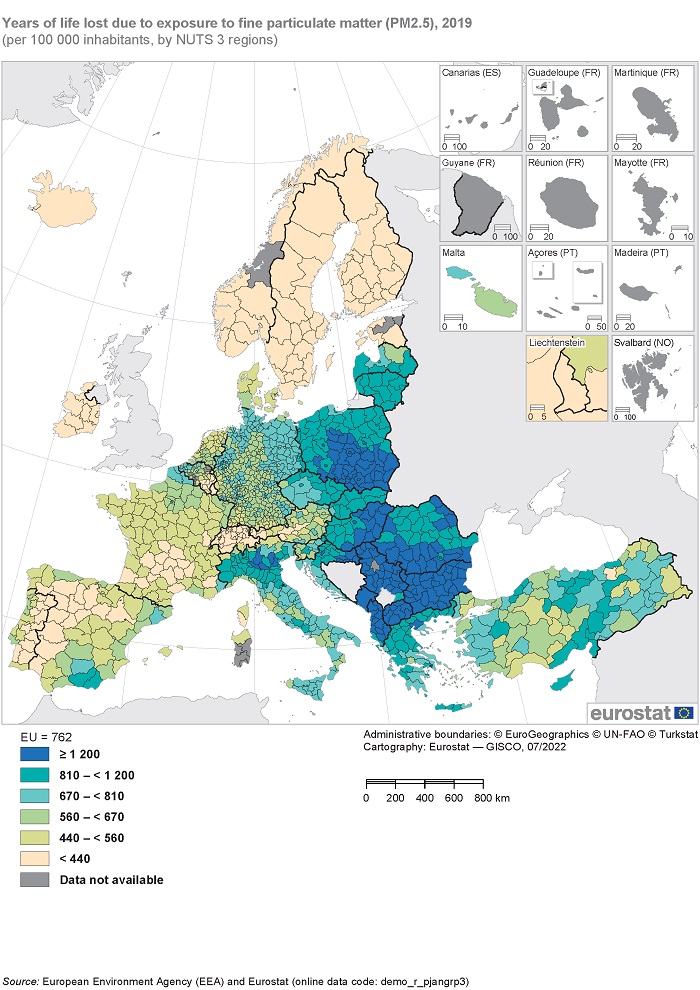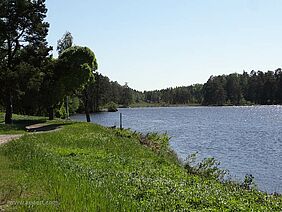The new environment statistics at the regional level, presented by Eurostat, provide data on water, forests, soil and air pollution in the EU, raising awareness that human activities strongly influence climate change and ecological degradation, posing a serious long-term threat to the environment. Eurostat highlights the United Nations 2030 Agenda for Sustainable Development, a long-term strategy aimed at combating environmental degradation and climate change through sustainable consumption and production.
Here are the main points of the statistics presented for the four environmental sectors – water, forests, soil and air pollution.
Water
Although most regions of the EU have sufficient water resources, water scarcity and drought are becoming more frequent. In 2019, the highest level of acute water shortages in the EU was seen in Spain, where about 8.5 million people faced severe water scarcity. Other regions with severe water stress are located in southern Italy, the capital city region of Portugal, and the Mediterranean islands of Cyprus and Malta. The figure below shows the EU regions with a share of wetlands and water bodies, which in the EU in 2018 amounted to 202,600 km², equivalent to 4.9% of the total area. The richest countries in this regard are the Netherlands, Finland and Sweden.
Forests
Information about the distribution of forests and other forested land in the EU is presented in the second section of the statistics. In 2018, there were 1.8 million km² of forests and other wooded land in the EU; this represents 43.5% of the total EU area. The Pohjois- ja Ita-Suomi region in Finland (164,591 km²) takes first place here, followed by Övre Norrland in Sweden (111,916 km²). Twelve other regions with more than 20,000 km² of forests are concentrated in the Nordic and Baltic countries, but also included Croatia and the Spanish regions of Castilla y León, Castilla-La Mancha, Andalusia and Aragon. Regions with less than one tenth of the total forest area are concentrated in the lowland regions of the EU: some regions in the Netherlands, northern Belgium, and northern Germany. The lowest shares were recorded in the German region of Bremen (1.9%) and the Dutch regions of Groningen (2.4%) and Zeeland (1.5%). The figure below provides information on forest connectivity, which is measured by forest area density. In addition to Finland and Sweden, forest areas with a very high degree of connectivity are also concentrated in several regions in eastern EU member states, such as Romania and Slovakia.
Soil
Changes in organic carbon stocks in agricultural soils play an important role for the sustainability of the agricultural sector. The concentration of organic carbon in most soils is usually about 2-5%, but can be lower or higher. Soils with more than 20 % carbon are called organic soils, they clean and absorb water better and provide optimal conditions for plants. The highest overall levels of soil organic stocks can be found in the northern and western regions of the EU, for example in parts of Ireland, Finland and Sweden, which are characterized by carbon-rich peatlands. The lowest levels are concentrated in drier and warmer regions, such as in the southern regions around the Mediterranean or in upland regions characterized by relatively low levels of vegetation. Changes in soil organic stocks tend to be slow: organic stocks in EU agricultural soils decreased by 0.6 percent between 2009 and 2018. The figure below shows the fastest decrease in organic C stocks, as well as its increase from 2009 to 2018.
Air pollution
Rounding out the statistics is the magnitude of the impact of fine particulate air pollution on human health, which is one of the main causes of premature death and disease in the EU. Many urban EU residents are exposed to high concentrations of air pollutants, e.g. from residential combustion, industrial and transport activities. It should be noted, though, that air quality in the EU has generally improved in recent decades. As with other positive indicators in this statistic, the Nordic countries, namely the remote regions of Finland and Sweden, lead the way in clean air. The highest exposure to fine particulate matter was recorded in the eastern and southern regions of the EU, mainly Bulgaria, Greece, Croatia, Northern Italy, Poland and Romania. The figure below shows the regions with the highest and lowest health impacts of air pollution and years of life lost due to exposure to fine particulate matter in 2019.

